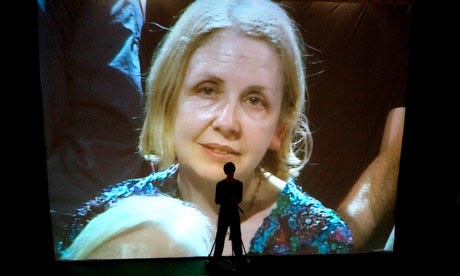The problem with fandom came to me while watching Clown - since it was part of the Glasgow Film Festival's Frightfest, I imagined it would be an example of how post-modern tropes had rescued horror from its garish stupidity. As it turned out, its a compilation of stupid, garish tropes, with a clown demon running about, killing kids and generally drooling multicoloured blood and saliva. It's unconvincing, mostly filmed in the dark to hide the special effects and has a nasty undercurrent that occludes the lack of genuine terror. It is a series of set-pieces that a horror fan can recognise, like a jazz fan stroking their beard over a particular chord change.
 At the same time, I am grinding through Kim Newman's Jago, a doorstop of a novel that showcases Newman's smarts (through a character doing a PhD about end-time fiction) and terrible writing style (he stumbles over prepositions and fits nouns with verbs that do not match). He sets the action in Somerset - which gets him bonus points - but forces too many stories into the narrative and frequently does sexy bits that are as erotic as watching a farmer shove his penis into the soil (which is the scene that I have just read).
At the same time, I am grinding through Kim Newman's Jago, a doorstop of a novel that showcases Newman's smarts (through a character doing a PhD about end-time fiction) and terrible writing style (he stumbles over prepositions and fits nouns with verbs that do not match). He sets the action in Somerset - which gets him bonus points - but forces too many stories into the narrative and frequently does sexy bits that are as erotic as watching a farmer shove his penis into the soil (which is the scene that I have just read).Jago and Clown are poor, and they are protected by a fandom. The deep awareness of a particular medium or genre's tropes, the sensitivity to the tiniest detail is fandom's strength, but it encourages apology for poor aesthetics. In the world of comics, any serious reader would have stopped pissing their cash up the wall of the X-Men franchise in about 2004: yet the fandom remains, happy to keep it going and debate (with some irritation) the relative quality of recent writers' takes on Cyclops or Emma Frost.
There is nothing wrong with liking a particular genre, but to make that the foundation of a cultural identity bothers me. It's not the cosplay or the social events (I rather like them), but the willingness to accept weak art because it is within a genre. Take Star Wars: at this point, most people would admit that half of the films associated with the franchise are atrocious (and let's not talk about the expanded universe). Yet people are still getting excited about the new film.
Funnily enough, I have a love for many genres: science fiction (PK Dick, Lem), horror (Clive Barker (Books of Blood), Lovecraft), superhero comics (and not just Alan Moore). But, perhaps because I am a critic, I do not want to defend the outlying crap that smuggles itself into popularity by virtue of playing to a fandom.
(By the way, this is offered up to debate. I think fandom has more to it than my rhetorical blast, and I hope, one day, a conversation will start on my blog.)


.jpg)



.png)


.jpg)






.png&container=blogger&gadget=a&rewriteMime=image%2F*)
%2BLandscape%2B(1).png)













.jpg)



.jpg)


.jpg)
.jpg)
.png)


.jpg)
.jpg)